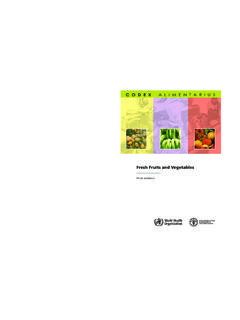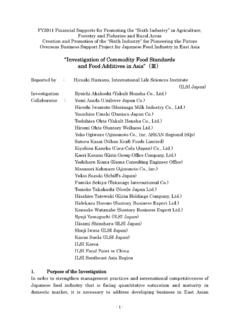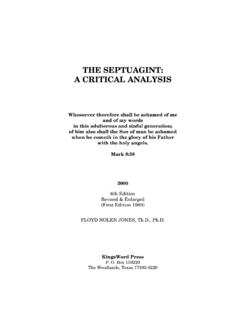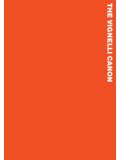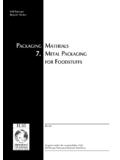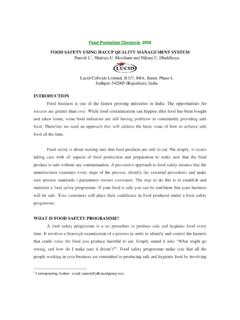Transcription of Ancient Versions of the Bible - Hebrew Aramaic
1 Ancient Versions of the BibleAncient Versions of the BibleDraft January 9, 2009By Ya'aqub Younan-LevineBibliotheca This is not the final version of this paper, and therefore may contain typos and areas where clarification is feel free to send feedback and notification of at gmail dot comIntroductionThe Ancient Torah, Prophets and Writings (Tanakh) was originally composed, for the most part, in Hebrew between the time of Moses and the last generation of the prophets. During the time of Nehemiah, the majority of Israelites, as the Bible tells us, could no longer comprehend the reading of the original Hebrew , thus translations were necessary.
2 The original Hebrew Tanakh was translated into the Aramaic language of the time and later a new edition of the Bible was translated into more developed Hebrew language of that time. The Aramaic Versions were translated by a group of Masoretes known as Medinkha'e (Masoretes of the East) and was finalized in the first century CE. The new Hebrew Bible , translated and edited by the Ma'arba'e (Masoretes of the West) too much longer to complete - up to the eleventh century CE! Both of these Aramaic and Hebrew editions are witnesses to the now lost original Hebrew text.
3 Both groups of translators and editors were very careful to preserve the original, at least in a translation (the Ancient version used by Aramaic speaking peoples 1 Ancient Versions of the Bibleof the East) or as a modern update (the updated text used today by Jewish scribes in writing Torah scrolls). And while they were careful, or meticulous, it is evident that errors, corruptions and even removal of certain words and phrases were removed from the western version and some major differences appear between the Eastern and Western Emanuel Tov, in his book Textual Criticism of the Hebrew Bible1, says: Even though the scribes of MT meticulously preserved a uniform text, breaches in this unity are nevertheless visible.
4 Between the early sources of MT there existed differences in consonants between texts form the West (Palestine) and the texts from the East (Babylon). Some 250 such differences are mentioned in the Masoretic notes as Medinkha'e and Ma'arba'e. 1 Published by Uitgeverij Van Gorcum, 2001 How old are our Bibles?As mentioned above, the Ancient Hebrew text, which no longer exists (at least in whole), dates back to the time of Moses. Various " Versions " of this same text (or group of manuscripts) were found at Kirbat Qumran (the Qumran Caves) and are generally referred to as the Dead Sea Scrolls.
5 The Dead Sea Scrolls are a collection of Biblical and non-biblical texts in Hebrew , Aramaic and Greek. The date of these manuscripts differ and scholars argue as to the exact dates of each scroll or fragment. There is some general agreement to many of the manuscripts dating back to the 300's BCE and the first century CE. In many cases the Aramaic and Hebrew texts of the Dead Sea Scrolls agree with the Aramaic version of the original Hebrew text and against that of the updated 2 Ancient Versions of the BibleMasoretic Hebrew text. I postulate that the original Aramaic Versions probably date back as far as Nehemiah's time with the necessary updates as the language of the people continued to develop.
6 Its actual origin however is considered to be a mystery by most scholars who take even the slightest interest in the Ancient Aramaic language. On the other hand, the Masoretic Hebrew texts are quite late in existence. The editing process for the Hebrew MT was completed in the eleventh century. The most complete known Hebrew Bible in existence (the Leningrad Codex) wasn't composed until more than one thousand years after Messiah1 walked the earth. Yet, the earliest known complete Aramaic version of the Scriptures date back to the fifth or sixth century, which was copied from a much earlier text which is proof is given in the Dead Sea Scrolls.
7 My great grandfather, Aran Ya'aqub Younan, who adapted the Aramaic Peshitta New Testament from Eastern Aramaic to Judeo- Aramaic (Neo- Aramaic )2, played with the idea that the Aramaic Tanakh and the earliest manuscripts of the western MT began to be composed around the same time. On the other hand, my father believed that the Aramaic could have been the main source text for MT. For either case, I am not yet ready, or comfortable to make an opinion on the Yeshua ewsy2 He began working on his codex in 1897 and the work on the original concluded by 1912 or a year before.
8 He was unable to complete the work before his death. Younan adapted the Church of the East Peshitta text to Jewish Neo- Aramaic which is typically written phonetically and replaces certain characters with others and written with the standard Hebrew alphabet - at least according to the spelling and grammatical rules in which he was Versions of the BibleWhy choose the Aramaic version over that of the Hebrew ?I have always said that oldest is not always better. However, if there is evidence of more than one textual witness, and these witnesses are older than any "updated" version ( , the Hebrew MT) and they do not agree with a latter version , then we must in good conscious choose the majority text.
9 There have been several examples demonstrating how the Ancient Aramaic Tanakh (AN"K) and the Dead Sea Scrolls often times disagree with that of the later Hebrew my opinion, in many cases even some of the targumic texts (Onqelos, Jonathan, Yerushalmi) are better than that of the Hebrew MT. The reason I say this is because of so many disagreements between the Ancient witnesses and the more modern Hebrew MT. It is well known that the Hebrew MT contains errors and corruptions as noted above, even though the Masoretes were meticulous in writing the says, Yet, in spite of their precision, even the manuscripts which were written and vocalized by the Masoretes contain corruptions, changes, and erasures.
10 More importantly, the Masoretes, and before them the soferim, acted in a relatively late stage of the development of the biblical text, and before they had put their meticulous principles into practice, the text already contained corruptions and had been tampered with during that earlier period when scribes did not as yet treat the text with such in the course of the scribal corruptions are recognized in the Qumran scrolls ( , 1 QIsaa in Isa 13:19; 26:3-4; 30:30; 40:7-8) on the basis of their comparison with MT and other texts, and, by the same token, in MT itself, when compared with other Sam 1:24; 4:31-22; 2 Sam 23:31; 2 Kgs 11:13; Jer 23:33; 29:26; 41 In many details MT does not reflect the 'Original Text' of the 4 Ancient Versions of the Biblebiblical between the Masoretic Text and earlier or different stages of the biblical text will continue to be recognized.
